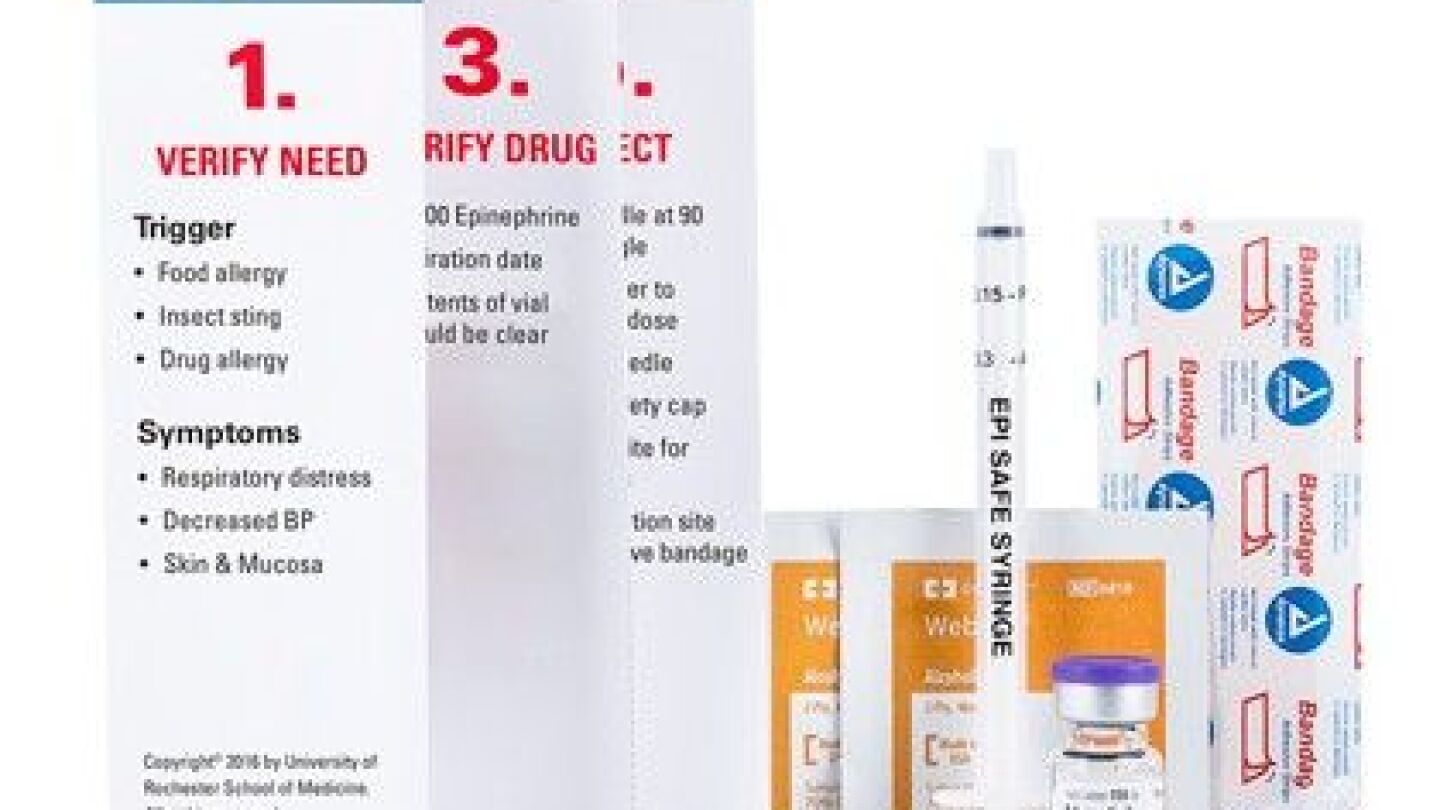Allergy and Anaphylaxis
Explore our comprehensive directory of articles on Allergy and Anaphylaxis, designed to support EMS professionals in managing allergic reactions and life-threatening anaphylaxis. This collection covers recognition of symptoms, administration of emergency medications, and patient care protocols in urgent situations. Understanding Allergy and Anaphylaxis is crucial for delivering timely and effective treatment. Additionally, consider reviewing our resources on emergency medication administration, which are closely related to managing allergic emergencies. Access these articles to enhance your preparedness and response to allergy-related emergencies.
One county in Texas found a cost-effective way to get epinephrine in the hands of those first to arrive to allow them to treat patients quicker
King County, Washington successfully introduced hand-drawn epinephrine to EMTs for severe allergic reactions and anaphylaxis
Curaplex Epi-Safe injection kits developed specifically for EMS can help agencies cut costs while improving patient care
Waveform capnography can be used to detect respiratory and circulatory compromise from anaphylaxis in children and to guide treatment
Failure to recognize and treat anaphylaxis quickly and dose calculation errors are more significant problems than how an epinephrine vial or ampule is labeled
The new device will be smaller and easier to carry than the traditional EpiPen; the device is currently being tested by the FDA
A recent state law allows paramedics to use an EpiPen, but not certified medical first responders
AllergyStop is small enough to fit on a keychain; it’s currently awaiting FDA approval
The Veta system connects a smart case with a mobile app and helps monitor an auto-injector’s location and usage
Co-hosts Chris Cebollero and Kelly Grayson comment on the week’s news, including the suspension of an EMT who left his partner and patient to help a girl who was choking
The company said they received 26 reports of malfunctions with the injectors; none involving patient deaths
A new study found epinephrine autoinjectors used to treat children in anaphylaxis caused lacerations and embedded needles
The only effective treatment for anaphylaxis is epinephrine, which should be given early and repeated as needed
The increase is due to bees, wasps and fire ants being active in the spring and summer months
The FDA reconfirmed an epinephrine shortage, and high demands for auto injectors may make them difficult to obtain
Medical examiner confirms multiple bee stings as the cause of death for the 65-year-old man
A researcher’s retrospective chart review identified biphasic reaction in 15 percent of pediatric anaphylaxis cases
Loud buzzing noise under the floor of a bedroom prompted removal of the unwanted house guests
Nearly 30 medics have reported rashes and welts all over their bodies
Prove your understanding of the predictable signs and symptoms of shock with this quiz for EMTs and paramedics
Review of allergic reaction signs and symptoms; practice prehospital epinephrine administration routes
Program has saved King County EMS $150,000 and along with training epi use has more than doubled
Calif. college student in burn center undergoing treatment for Stevens-Johnson Syndrome; causes skin’s layers to part
23 sixth-graders were treated for stings, including one boy who had a significant reaction and was hospitalized



















